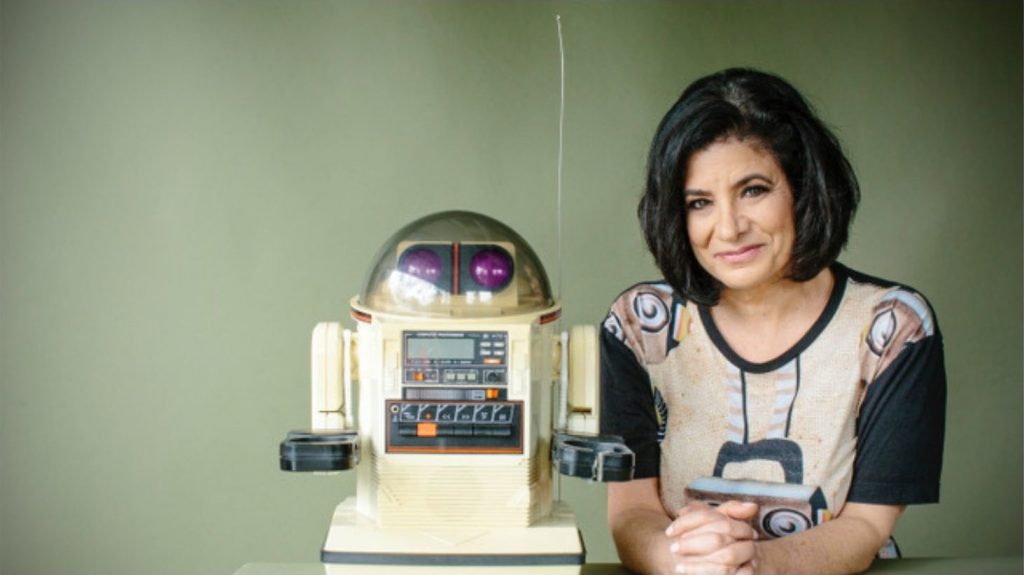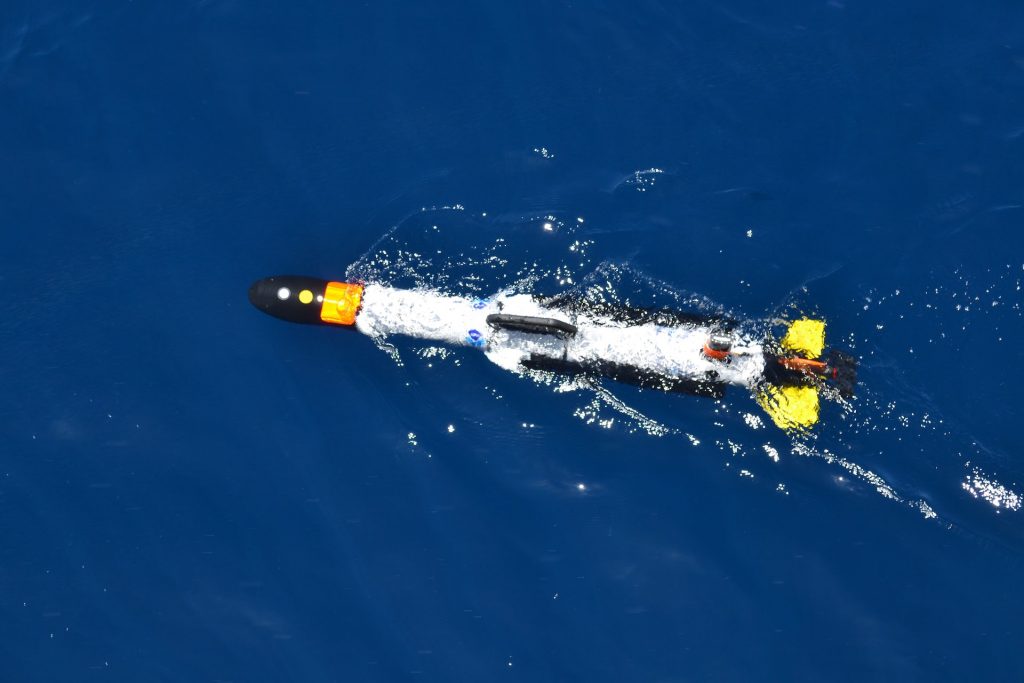Orchestra-conducting robot wows audience in S. Korean capital
Robot swarms neutralize harmful Byzantine robots using a blockchain-based token economy
Geek+ drives automation of advanced BMW-producing plant in China
Challenges in Drone Technology
Joanne Pransky: Rest in Peace (1959-2023)

It is with great sadness that I am sharing that Joanne Pransky, the World’s First Robotic Psychariatrist, and who Isaac Asimov called the real Susan Calvin passed away recently. I had several delight conversations with her, including an interview and moderated panel.
Joanne was a tireless advocate for robotics AND for women in robotics. She didn’t have advanced degrees in robotics but had worked in the robotics industry and then in robot trade journals- she had quite the eye for finding really useful technology versus hype. Her enthusiasm and passion for constantly learning was an inspiration to me and I was privileged to know her as a friend. I interviewed her a few years ago about Asimov which you can see here. She points out how amazing Asimov was- at 19 years old writing about robots and imagining them in a positive way, as helpers, companions, tools to enable us to do more of the “human” stuff- not the shoot-em-up, take over the world Frankenstein monster motif. Joanne was one of the first to really push what is now called human-centered robotics– that there is always a human involved in any robot system.
Since she knew Asimov, she was in a good position to discuss Dr. Susan Calvin- possible the worst stereotype of a woman roboticist ever- no family, no friends, totally obsessed by work. You definitely should hear her discussion- I don’t want to spoil it by trying to paraphrase it. I don’t know if Alec Nevala-Lee, the author of Astounding:John W. Campbell, Isaac Asimov, Robert A. Heinlein, L. Ron Hubbard, and the Golden Age of Science Fiction- a terrific book, you should read it, would agree but it definitely adds a new dimension to understanding- and enjoying- Asimov’s robot stories.
I also moderated the 100 Years of R.U.R. panel with Joanne and Jeremy Brett for the 2021 We Robot conference. Her talk and comments were brilliant. While I had always heard that “robot” came from the Czech word “robota”, she pointed out that “robota” stems from the Greek work “orphanos” which means a change in status (like being orphaned) – where the “o” and “r” are switched in Slavic languages. So the roots in R.U.R. aren’t just drudgery, it is that being a robot is also a lower status. Both words convey exactly what Capek was trying to express about the dehumanization of workers. What an interesting detail!
That sums up Joanne: smart, seeing things that others missed, warm, positive, enthusiastic, engaging, wanting everyone to know more, do more, have a better life through robotics.
Joanne, I miss you.
And if you never met her, please check out her interview:
Soft robo-glove can help stroke patients relearn to play music
Researchers develop first-ever wooden robotic gripper that is driven by moisture, temperature and lighting
How should a robot explore the moon? A simple question shows the limits of current AI systems
Titan submersible disaster underscores dangers of deep-sea exploration – an engineer explains why most ocean science is conducted with crewless submarines

Researchers are increasingly using small, autonomous underwater robots to collect data in the world’s oceans. NOAA Teacher at Sea Program, NOAA Ship PISCES, CC BY-SA
By Nina Mahmoudian (Associate Professor of Mechanical Engineering, Purdue University)
Rescuers spotted debris from the tourist submarine Titan on the ocean floor near the wreck of the Titanic on June 22, 2023, indicating that the vessel suffered a catastrophic failure and the five people aboard were killed.
Bringing people to the bottom of the deep ocean is inherently dangerous. At the same time, climate change means collecting data from the world’s oceans is more vital than ever. Purdue University mechanical engineer Nina Mahmoudian explains how researchers reduce the risks and costs associated with deep-sea exploration: Send down subs, but keep people on the surface.
Why is most underwater research conducted with remotely operated and autonomous underwater vehicles?
When we talk about water studies, we’re talking about vast areas. And covering vast areas requires tools that can work for extended periods of time, sometimes months. Having people aboard underwater vehicles, especially for such long periods of time, is expensive and dangerous.
One of the tools researchers use is remotely operated vehicles, or ROVs. Basically, there is a cable between the vehicle and operator that allows the operator to command and move the vehicle, and the vehicle can relay data in real time. ROV technology has progressed a lot to be able to reach deep ocean – up to a depth of 6,000 meters (19,685 feet). It’s also better able to provide the mobility necessary for observing the sea bed and gathering data.
Autonomous underwater vehicles provide another opportunity for underwater exploration. They are usually not tethered to a ship. They are typically programmed ahead of time to do a specific mission. And while they are underwater they usually don’t have constant communication. At some interval, they surface, relay the whole amount of data that they have gathered, change the battery or recharge and receive renewed instructions before again submerging and continuing their mission.
What can remotely operated and autonomous underwater vehicles do that crewed submersibles can’t, and vice versa?
Crewed submersibles will be exciting for the public and those involved and helpful for the increased capabilities humans bring in operating instruments and making decisions, similar to crewed space exploration. However, it will be much more expensive compared with uncrewed explorations because of the required size of the platforms and the need for life-support systems and safety systems. Crewed submersibles today cost tens of thousands of dollars a day to operate.
Use of unmanned systems will provide better opportunities for exploration at less cost and risk in operating over vast areas and in inhospitable locations. Using remotely operated and autonomous underwater vehicles gives operators the opportunity to perform tasks that are dangerous for humans, like observing under ice and detecting underwater mines.
Remotely operated vehicles can operate under Antarctic ice and other dangerous places.
How has the technology for deep ocean research evolved?
The technology has advanced dramatically in recent years due to progress in sensors and computation. There has been great progress in miniaturization of acoustic sensors and sonars for use underwater. Computers have also become more miniaturized, capable and power efficient. There has been a lot of work on battery technology and connectors that are watertight. Additive manufacturing and 3D printing also help build hulls and components that can withstand the high pressures at depth at much lower costs.
There has also been great progress toward increasing autonomy using more advanced algorithms, in addition to traditional methods for navigation, localization and detection. For example, machine learning algorithms can help a vehicle detect and classify objects, whether stationary like a pipeline or mobile like schools of fish.
What kinds of discoveries have been made using remotely operated and autonomous underwater vehicles?
One example is underwater gliders. These are buoyancy-driven autonomous underwater vehicles. They can stay in water for months. They can collect data on pressure, temperature and salinity as they go up and down in water. All of these are very helpful for researchers to have an understanding of changes that are happening in oceans.
One of these platforms traveled across the North Atlantic Ocean from the coast of Massachusetts to Ireland for nearly a year in 2016 and 2017. The amount of data that was captured in that amount of time was unprecedented. To put it in perspective, a vehicle like that costs about $200,000. The operators were remote. Every eight hours the glider came to the surface, got connected to GPS and said, “Hey, I am here,” and the crew basically gave it the plan for the next leg of the mission. If a crewed ship was sent to gather that amount of data for that long it would cost in the millions.
In 2019, researchers used an autonomous underwater vehicle to collect invaluable data about the seabed beneath the Thwaites glacier in Antarctica.
Energy companies are also using remotely operated and autonomous underwater vehicles for inspecting and monitoring offshore renewable energy and oil and gas infrastructure on the seabed.
Where is the technology headed?
Underwater systems are slow-moving platforms, and if researchers can deploy them in large numbers that would give them an advantage for covering large areas of ocean. A great deal of effort is being put into coordination and fleet-oriented autonomy of these platforms, as well as into advancing data gathering using onboard sensors such as cameras, sonars and dissolved oxygen sensors. Another aspect of advancing vehicle autonomy is real-time underwater decision-making and data analysis.
What is the focus of your research on these submersibles?
My team and I focus on developing navigational and mission-planning algorithms for persistent operations, meaning long-term missions with minimal human oversight. The goal is to respond to two of the main constraints in the deployment of autonomous systems. One is battery life. The other is unknown situations.
The author’s research includes a project to allow autonomous underwater vehicles to recharge their batteries without human intervention.
For battery life, we work on at-sea recharging, both underwater and surface water. We are developing tools for autonomous deployment, recovery, recharging and data transfer for longer missions at sea. For unknown situations, we are working on recognizing and avoiding obstacles and adapting to different ocean currents – basically allowing a vehicle to navigate in rough conditions on its own.
To adapt to changing dynamics and component failures, we are working on methodologies to help the vehicle detect the change and compensate to be able to continue and finish the mission.
These efforts will enable long-term ocean studies including observing environmental conditions and mapping uncharted areas.
Nina Mahmoudian receives funding from National Science Foundation and Office of Naval Research.
This article is republished from The Conversation under a Creative Commons license. Read the original article.